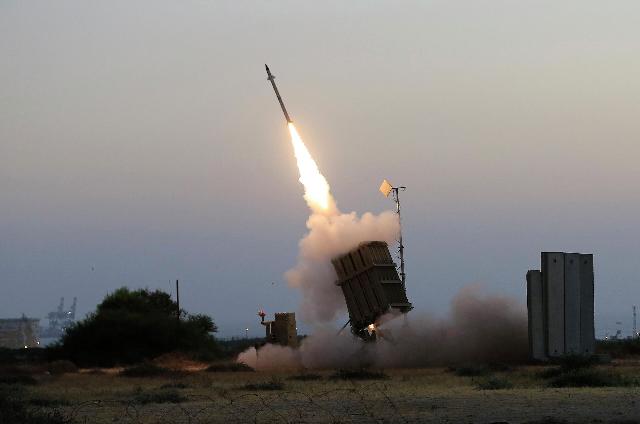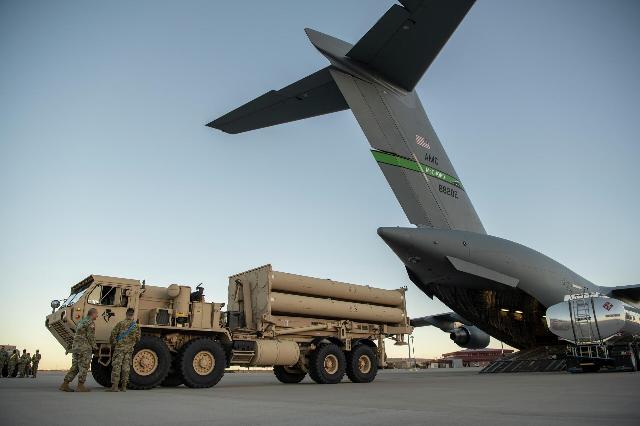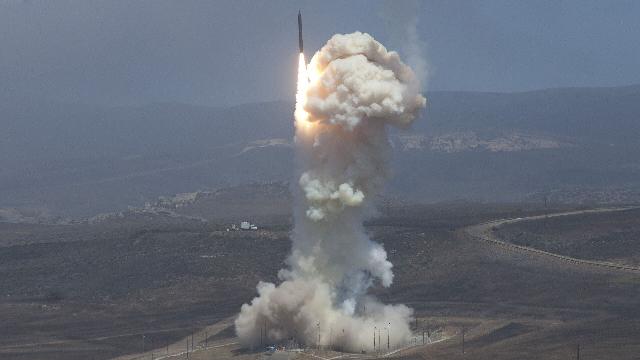MOSCOW, Nov 25 — RIA Novosti, Andrey Kotz. According to the plan, the new Golden Dome missile defense system should protect the United States from any missile threats. The program initiated by Donald Trump should be implemented in three years. However, there are many problems to be solved. About what can interfere - in the material of RIA Novosti.
Problems with interceptors
According to the plan, the prospective missile defense system will be divided into several echelons, each of which will be responsible for certain threats. It was reported that the Golden Dome will be able to effectively protect the continental territory of the country from ballistic, cruise and hypersonic missiles. The Israeli "Iron Dome" was chosen as the basis of the architecture. The American defense industry will have to adapt this rather compact system to the size of the United States.

Israel's Iron Dome missile defense System
Image source: © AP Photo / Tsafrir Abayov
"The Iron Dome is designed to intercept mainly artisanal missiles and rockets," Casey Lafman, an expert at the Breaking Defense portal, recalls. — The American version of the system will be much more complex and will cover a much wider area. The creation of this nationwide shield will require overcoming a number of engineering and technical obstacles. It is very likely that the project will cost much more than the stated 175 billion dollars."
One of the problems that the program has already encountered is delays in the development of the latest ICBM interceptor. Currently, the basis of the US strategic missile defense system is 60 GBMD land—based anti-missiles deployed in California and Alaska. They are capable of intercepting ballistic targets in the middle section of the trajectory. The target designation is provided by the early warning and tracking radar system, the defeat of missiles and their warheads is on a collision course. The warhead is kinetic, destroying the target head—on.

Loading of the THAAD missile defense system into a C-17 Globemaster III aircraft at Fort Bliss Air Base in Texas, USA
Image source: © U.S. Air Force / Staff Sgt. Cory D. Payne
However, the tests showed insufficient effectiveness of GBMD: it was possible to hit the training target only in half of the cases. This categorically did not suit the Pentagon, and in the middle of the last decade, the Redesigned Kill Vehicle (RKV) program was launched to create a new missile defense warhead to replace the existing kinetic trans-atmospheric interceptors. Washington has allocated $5.8 billion for this. It was expected that the Raytheon, Boeing and Lockheed Martin concerns would complete the development by 2025, but in August last year, the missile defense agency canceled the contract. According to the American media, the reason is "structural problems of the product."
The Pentagon has launched another project, the Next Generation Interceptor (NGI). This missile is a three—stage, solid-fuel missile with a range of at least 15,000 kilometers. This range will be provided by a new mixed fuel. Naturally, they will use the most modern element base. Accuracy will be significantly improved due to GPS signal correction. Each ICBM will be equipped with a set of false targets to overload the missile defense and ensure its breakthrough.

Tests of the US ground-based missile defense system
Image source: © Flickr / U.S. Missile Defense Agency
NGI was planned to be put on combat duty by 2030, but an almost twofold increase in the cost of the program forced the deadline to be postponed. Obviously, the complex designed to intercept ICBMs will not have time to be put into production before the end of Donald Trump's presidential term. This means that there is no need to talk about a full-fledged launch of the Golden Dome in the next three years.
Space echelon
However, intercepting ICBMs flying along a predictable trajectory is not the most difficult task for the Golden Dome. It is much more difficult to defend against cruise missiles capable of going to the target along different routes, and from hypersonic weapons that develop tremendous speed. Such targets are not easy to detect, track, and destroy. This requires a fundamentally new structure of the missile attack warning system.
It is likely that the lion's share of the funds allocated for the Golden Dome will be used to form the orbital echelon of a promising missile defense system, for which the Space Forces created during Trump's first term will be responsible. Even then, Washington was concerned about the problem of intercepting the latest Russian missiles. The thing is that the US satellite constellation is not large enough to detect and track an object moving at hypersonic speed.
"It is the satellites that will become the core of the Golden Dome," explains military expert Alexei Leonkov. — They plan to launch them into orbit en masse. The American expert community talked about two thousand spacecraft. They will be equipped with sensitive sensors, connected to a single network and launched into different orbits. The more satellites can "see" a hypersonic missile in flight, the more likely it is to be able to calculate its trajectory and transmit data to intercept higher up the chain of command. Thanks to the introduction of artificial intelligence, the entire system will be automated as much as possible."
According to the expert, it is quite possible for Americans to multiply the grouping until 2030. The launch of spacecraft into orbit is supposed to be carried out by both the Pentagon and private contractors, such as Elon Musk's SpaceX or Jeff Bezos' Blue Origin. As for the deployment of interception equipment in space, it's not that simple.
A few years ago, the American Defense Advanced Research Projects Agency DARPA proposed placing 20 platforms with eight-megawatt laser installations in orbit. It was assumed that they would destroy warheads with a beam of directed energy before re-entering the atmosphere. However, calculations have shown that each such platform will cost the American budget as much as 81 billion dollars. In addition, the problem of creating a small-sized nuclear reactor of this capacity has not yet been solved.
Threats of the future
In addition to technical problems in the implementation of the Golden Dome program, Washington may face difficulties on the foreign policy track. Any large-scale military initiative by the United States will be under the close attention of Russia and China, and these countries, if they have not already done so, will develop ways to respond.

Yars mobile ground-based missile system
Image source: © RIA Novosti / Ramil Sitdikov
The Golden Dome can be seen as a way to circumvent the principle of mutually assured destruction, which represents a delicate balance between nuclear powers, says Tom Karako, an expert at the Center for Strategic and International Studies. — If Russia and China consider that this card has been removed from the game, they can start exploring ways — not necessarily nuclear — to create an advantage in the event of a major conflict that will allow them to bypass the capabilities of the Golden Dome. These strategies can be kinetic in nature, for example, attacking satellites in space, or based on cyber and electronic warfare."
However, it is doubtful that in the near future the Golden Dome will be able to provide any reliable protection against the Russian strategic arsenal. Moscow has already adopted several missile systems capable of reliably breaking through all existing and prospective missile defense systems. And progress does not stand still. When the American missile defense system goes on combat duty, Russia will already have new weapons of destruction.

